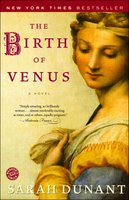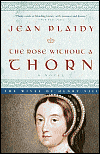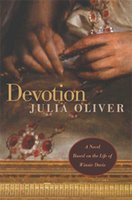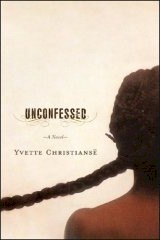[Novelist and Renaissance expert C.W. Gortner was kind enough to accept my invitation to write a historical fiction-related essay for this blog. I hope you enjoy his article! --slj]
Histo-Romance: The New Hybrid?
The good news – no, the great news!— is that historical fiction is booming. The genre has experienced a revival in the last five years that is nothing short of stupendous. Every major publishing house and many smaller and/or independent presses are issuing new titles, and there seems to be an increasing awareness among readers that historical fiction can offer both an entertaining and informative reading experience that transports us to other eras and places, while still honoring our need for emotional fulfillment. For many authors, myself included, this is fantastic news. I can recall the “drought years” of the mid-80s and 90s, when attempting to get agent representation, much less submission to editors, of an historical fiction book was a daunting task, at best. Though represented by renowned agents who had previously sold successful historical novels, of my four manuscripts that were circulated to acquisition editors in New York during these years, not one was bought. Many of my rejection letters were full of praise for the writing, the story, etc., and all carried the same dreaded caveat: “Unfortunately, we feel historical fiction is not doing well at this time . . .” It was enough to make me want to put away the proverbial quill and take up knitting! Perseverance became a lodestone that kept me writing even as I saw the dream of becoming published dwindle with each passing year. The consolidation of houses and loss of independent imprints, the quest for the next blockbuster book, seemed to have sounded the death-knell on a genre that had its break-out books, but mostly sold well in the mid-list arena. Several of my author friends either couldn’t get their options picked up or were switching genres; others held on by the skin of past successes, riding out what promised to be a long and bleak period. There were a few authors who survived and indeed thrived; Margaret George’s epics continued to appear, and Sharon Kay Penman thrilled readers with her marvelous evocations of the medieval world. But, by and large, these were exceptions.

Then came Philippa Gregory and the unexpected success of
The Other Boleyn Girl. Originally issued in trade paperback in the United States, it did overwhelmingly well. Ms Gregory went on to pen several more hits, graduating to hardcover with
The Virgin’s Lover and getting hardcover re-issues of her other two Tudor-themed novels. Sarah Dunant’s
Birth of Venus burst onto the scene, as well, garnishing rave reviews and becoming a bestseller: suddenly, historical fiction was back in vogue! It seemed as if overnight, titles sprouted like flowers after a warm rain, as many publishers decided to test the moribund historical market once more. Devotees of the genre like me, who had resorted to combing used bookstores and shipping in UK titles at an exorbitant cost to satisfy my thirst, were now faced with an assortment of titles to choose from. I even snagged a publisher for my historical mystery / adventure novel, which every major NY house had rejected years before. Granted I was published by a tiny independent that has since stopped contracting authors under its royalty paying arm, but without the boon I might not have even found that! Historical fiction was everywhere. It was good to be alive.
It is perhaps no coincidence that this resurrection coincided to a certain degree with the crumbling of the historical romance empire. The staple of supermarket chains, with the heavily muscled hero in some form of costume and gorgeous heroine in semi-dishabille, had begun to lose market share; I heard from three romance-writer acquaintances that their publishers were scaling back on traditional romance, and branching out instead into the alternative “paranormal romance” area (thanks, in great part, to the phenomenal success of Laurell K. Hamilton’s books) and they, the writers, were now scrambling to produce more commercially viable titles. I’ve never been a romance reader. I must confess, however, that in the Drought Years I succumbed to a few books by Rosalind Laker, mainly because she set her tales in historical periods and I could take the strong romantic element, because she had done her research. I therefore greeted with some trepidation the news that traditional historical romance might be slipping into the same dark tunnel we had seen occur with historical fiction.

Then I began to notice an interesting development. While books like
Birth of Venus were being hailed as literary first, historical only second, some publishers began to re-issue previously published and often older historical novels (Jean Plaidy’s profuse collection,
Katherine by Anya Seton) and re-package previous historical romance titles with the new cover styles and thematic back cover text of “straight” historical fiction. At first, I was taken aback. I had always drawn an invisible division for myself as both a reader and as a writer: I read historical fiction. I write historical fiction. Time and place, character and history, are paramount to me in both experiences. While there could be, indeed sometimes must be, an element of romance (as people do fall in love), it was not the driving central theme of my work or reading: I wanted the fictional recreation of history to be front and center. Now, I faced books marketed as historical fiction that had been published previously as historical romance and I had to question my own bias. If it is a novel and there’s a historical element to the story, is it then historical fiction by definition? Or does a romantic plot line that dominates even the history and, indeed, in some cases, subverts it in order to exalt the hero and heroine’s love interest, classify itself by its very nature as romantic fiction? And who was I to make the distinction, anyway?
Still, the hybrid I’ve come to call “histo-romance” perturbed me. First, I knew that re-packaged titles meant that new voices to the scene, untested historical novelists with unique tales to tell, would have less of a chance at being heard, as it’s always easier and more profitable to bank on something with a track record. Re-issuing a novelist’s older romance titles if she/he had shown success in another genre, such as, say, historical mystery, would attract readers. I also knew of talented authors whose options had been dropped because of this phenomenon, or been told by their editors to add “more sex and/or romance” to their stories to appeal to the demographic the publisher aimed toward.
Books are precious commodities today. The cost of publishing, the shrinking pool of readers we keep hearing about, the sheer choices people can make today as to where to spend their entertainment dollars, have made the competition for readers more fierce than it has ever been. Successful books are rare; successful authors struggle to get there and to stay there, and while the resurgence in historical fiction is a blessing to fans like me, I do wonder where it will lead in the end. Are we experiencing a true boon, or a fabrication that only allows certain types of books? Is the distinction between historical fiction and historical romance blurring, while the division between historical fiction and literary historical novels widening? Is there still a place for that marvelous new novel that brings alive a time and a place we rarely hear about, and does not necessarily conform to a pre-assigned publishers’ marketing niche?
I don’t have answers to the questions, and perhaps, in the final say, it’s all good for readers – providing we continue to have access to the fresh voices, fresh stories, and fresh approaches that have, for as long as its been in existence, both revitalized and distinguished the tradition of historical fiction.
C.W. Gortner is the author of the Tudor adventure novel
The Secret Lion and the forthcoming
The Last Queen, about Juana the Mad of Castile. He reviews regularly for
The Historical Novels Review. Visit him at:
www.leonibus.com.















